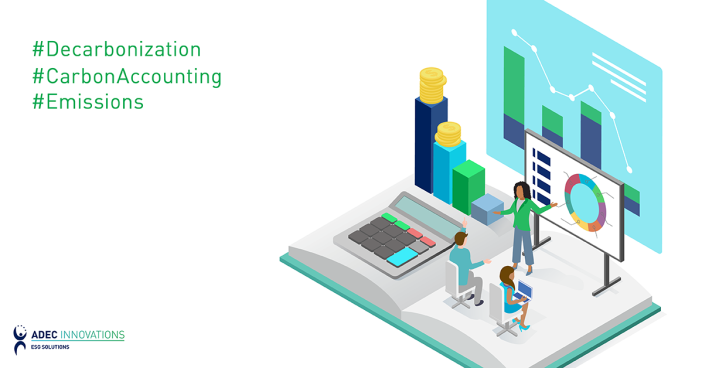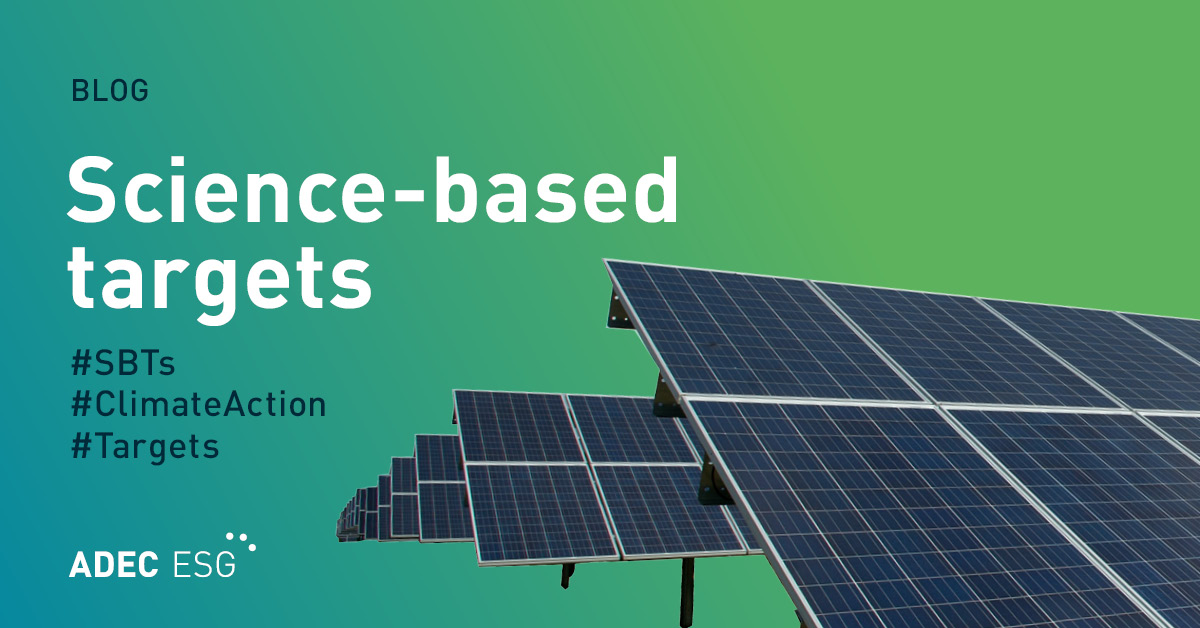Using internal carbon pricing (ICP) has grown in popularity in recent years as an effective method to help companies make the shift towards decarbonization. Last year, CDP reported that the number of companies using internal carbon pricing has increased 80% in the last five years. Setting an internal price on carbon allows companies to plan for the future and is used as an input in scenario planning, forecasting, and other decision-making processes.
Why are so many organizations making this shift, and what steps can you take to set an internal carbon price? Why should you use internal carbon pricing as a part of your ESG strategy, and how can you ensure that you do so in a way that has a greater holistic impact on your organization?
Why set an internal price on carbon?
Easing low-carbon transition
For many organizations, internal carbon pricing helps balance the scales between two major factors in a low-carbon transition:
- The cost of changing technologies
- The resources needed to pivot operations toward decarbonization
A low-carbon transition can seem daunting when processes, materials, relationships, and prices are well-established and difficult or complicated to change.
This balancing of scales comes into view more and more every day, as pending regulations and requirements come into effect and organizations start to feel the impacts of climate change. Many organizations are now beginning to build climate risk analysis into their overall strategy.
Managing climate-related risks
Accounting for GHG emissions isn’t just about capital expenditures—it’s about long-term, strategic thinking. As we transition to a low-carbon economy and global regulators raise the bar on climate action, companies want to account for carbon as a part of future risk, as well as monetary risk.
One of those key climate risks is greenhouse gas (GHG) emissions within operations.
Setting an internal price on carbon allows you to make informed decisions based on current and future risk, whether that’s policy and legal risk, reputation or market risk, or direct and indirect physical risk.
Staying ahead of external drivers
Companies in every industry are feeling greater pressure from consumers, value chain partners, investors, and regulators to manage carbon as a part of managing risk. From utilities to real estate investment and transportation to professional services, most everyone is fielding questions about carbon intensity, accounting, and reduction plans.
Both federal regulators and global frameworks are moving toward adopting carbon pricing. For example, many emerging markets, such as China, are initiating pilot schemes for carbon pricing mechanisms, while other countries are enacting or strengthening carbon taxes. Central banks across Europe are stress-testing for a low-carbon transition, encouraging swift action on climate change. In March 2022, the U.S. Securities and Exchange Commission proposed rule changes that would make certain climate-related disclosures a part of mandatory reporting—including scope 1, 2, and 3 GHG emissions.
The Task Force on Climate-Related Financial Disclosures (TCFD) is also putting a focus on internal carbon prices, and it is part of the cross-industry foundational set of metrics that the TCFD encourages participants to disclose. And if your organization is setting a science-based target, setting an internal price on carbon can be an effective aid in achieving those targets by giving you a means to incentivize and enable new technologies, processes, and ways of thinking about solutions—as opposed to a more traditional, low cost-centered mindset.
Key considerations in setting an ICP
At the end of the day, your internal carbon price should suit the needs and goals of your organization. There is no one-size-fits-all solution to internal carbon pricing, and there are many factors to consider when strategizing around this concept.
Purpose
Your purpose and goals will plot the course for your ICP and how it will be used in your organization. Consider why you are setting an internal carbon price. How will doing so help you reach your goals? How can an ICP help your company make informed decisions towards a low-carbon transition? Involve the stakeholders that would be using the ICP and build a consensus before moving forward.
How carbon pricing is used will vary from company to company, in part based on what the purpose of your carbon pricing program is. For example, you may use internal carbon pricing to incentivize (shadow price decision-making process) or as a fund (to capture money associated with decisions that you’re making).
Readiness
Is your company prepared to set and use internal carbon pricing? What steps need to be taken to ensure readiness across all stakeholders? Before jumping in, be sure your organization has a firm grasp on how GHG emissions are being calculated, managed, and potentially added to decisions about capital expenditure projects.
Risk
The “inherent” risk of carbon should be reflected in your internal price, from a qualitative perspective. These risks might include regulatory risk, changing consumer preferences, and reputational risk—among others—and will vary based in part by industry, GHG intensity of business activities, and geographic distribution.
For example, when thinking about your internal carbon pricing, consider how some of the following factors could impact your organization in the short and long term:
- Increasing regulatory costs, taxes, permits, etc.
- Legal risks such as environmental litigation, often as a result of GHG-related policy and regulatory changes
- Rising fossil fuel prices
- Advances in renewable energy technology and carbon capture and storage
- Changes in consumer preferences
Methods
Internal carbon pricing generally takes one of three forms:
A shadow price is an estimated value on carbon. This method often makes the most sense and is the most commonly used.
An implicit price is based on how much it costs the organization to implement emission reduction projects. Several implicit carbon prices may appear within the same organization.
An internal carbon fee is the market value of each ton of carbon emissions, agreed upon by all stakeholders within the organization. This method is often used to collect a pool of funds used for emissions-reducing investments and other programs.
Variance and changes over time
Some organizations set a static price, one that does not change over time or across the business. Alternatively, others set a sliding price that increases over time or changes based on business unit, location, or other variables.
Adjusting carbon pricing over time allows companies to prepare for and react to expected or unexpected changes. Data from a 2021 CDP report suggests that the majority of companies use evolutionary prices as a way of preparing for greater carbon risk in the future.
On the other hand, you may find that a static price makes more sense for your business. Implementing a relatively high static carbon price may be a way to internalize that risk early on, better preparing you for future risk long-term.
Prices may also be uniform across your organization or vary across business units or geographical location. Only you can decide what variance—or lack thereof—is the best fit for your company.
Challenges in implementing and administering an ICP
An effective internal carbon pricing program connects internal education, varied operational processes, and company financials—all of which are complex systems that need to integrate in order for the ICP to do its job.
Every organization will encounter its own challenges, but broadly speaking, these may include:
Taking the leap from setting to implementing
Let’s say you’ve already gone through the process of setting an ICP. What mechanism can you use to then implement that price seamlessly across your organization? How will the price be used by stakeholders, and how do you ensure that the uptake of your carbon pricing is consistent in every department involved?
The solution is—as with most aspects of the Sustainability Journey—different for every organization.
For example, in 2015, the Tata Group—including Tata Steel, Tata Chemicals, and Tata Motors—developed its guidance on internal carbon pricing. To date, the group uses this strategy to inform capex decisions, with Tata Power and Tata Steel Europe committing to carbon neutrality by 2050 and Tata Motors committed to 100% renewable energy sourcing as a part of the RE100 initiative.
On the other hand, as a technology company that achieved carbon neutrality in 2012 primarily by investing in offsets, Microsoft’s approach to internal carbon pricing is drastically different. Now aiming to be carbon “negative” by 2030, Microsoft announced in 2020 that all business divisions would pay an internal carbon fee for all scope 3 emissions, with fees paid by each division dedicated to fund sustainability improvements and carbon removal activities. This fee was later updated to be more aggressive and “better match the underlying cost of carbon abatement.”
Idiosyncratic solutions
As we have seen, there is no one-size-fits-all approach to internal carbon pricing. How that price is set will be different for every company
Consequently, what that price is will vary from company to company as well. In a 2021 report, CDP found that the median price of disclosing companies was US$25 per metric ton of CO2e—but this could go as high as US$200 per ton, depending on accounting methods, region, and industry.
Holistic systems
The concept of an internal carbon price is holistic. Ultimately, it impacts your entire organization.
For this reason, internal education, integrated processes, and a solid link between the ICP and company financials are key to making sure your ICP fulfills its purpose and helps you meet your stated goals. These are complex solutions that need to be coordinated and integrated in the long- and short-term, and they need to have staying power.
Internal carbon pricing: A catalyst for meaningful action
An internal carbon price is a great tool for accountability, tracking, monitoring, financial reporting, and staying on top of regulation. It also serves as a major catalyst for meaningful action. Below, we explore four ways that organizations use internal carbon pricing as a tool to enact holistic, long-term change.
Engagement and innovation
An ICP can be a useful tool for internal education and engagement on the topics of sustainability, resilience, and future planning. To do so, provide support for internal teams by guiding the process and method by which the ICP will drive these stakeholders to make informed decisions and consider more innovative climate solutions. Link the ICP with any new or existing GHG goals, targets, and reporting. In turn, this will drive change in your overall organization and help manage future risk.
Incentivization
An internal price of carbon can help incentivize the stakeholders that use it to actively factor carbon, methods of reduction, and other GHG-related issues into day-to-day and long-term strategic decision-making. Once your ICP is implemented, monitor its use. Is it being used? Where? Is it being used properly?
As previously mentioned, consider linking the ICP with any GHG goals, targets, and reporting. Doing so helps incentivize stakeholders to directly connect those GHG goals with their other corporate goals and targets.
Flexible decision-making
Because carbon pricing places a monetary value on carbon emissions, it offers flexibility in how companies think about:
- How carbon reduction impacts their business; and
- How business decisions impact low-carbon transition plans.
For example, once reductions are assigned a monetary value, that value can help inform decisions on capital investments such as research and development.
Modeling risk
Internal carbon pricing also gives companies the ability to assess risks and opportunities as they relate to carbon and is especially helpful in modeling regulatory risks. For example, a company can conduct stress tests on business plans and projects based on a set carbon price in order to better understand their business resilience and the extent of any risks.
Setting an internal price of carbon can help you draw direct connections between emissions reduction goals and business goals. While the details of ICP setting and implementation vary from organization to organization—requiring a fully customized approach—the benefits of this type of carbon accounting far outweigh the costs for many companies.
ADEC ESG Solutions helps organizations of every size and geography lead the charge on global climate action. With years of experience offering support on internal price of carbon frameworks and development, low-carbon integration, and other ESG programs, we’ll help you take strategic action and put you at the forefront of sustainable change. Talk with us today about building a solution that’s right for your organization.




